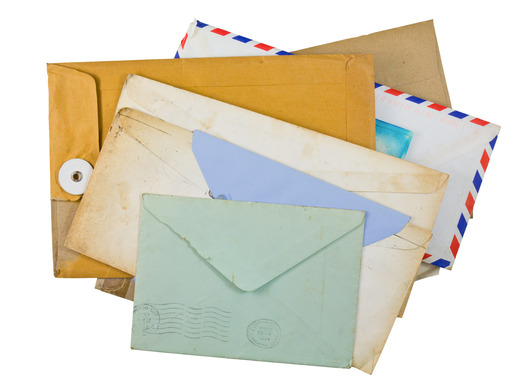
The Oxford Dictionary defines envelope as “a flat paper container with a sealable flap, used to enclose a letter or document”. However, to a designer, envelopes can be more than that. Envelopes can not only hold a document, but can communicate a message based on the type and style used. When sending a wedding invitation, would it be better to use a commercial envelope or a cream a-style envelope with gold foil stamping? Today, we will study the pieces that create envelopes as well as the most standard envelope types.
Envelope Basics
In order to help better distinguish the similarities and differences between envelopes, it is important to understand the basics of envelope anatomy.
Seams

Since envelopes are often made from a die-cut of a flat sheet, they have to be glued and assembled to actually be able to serve their purpose. When referring to the seam type of an envelope, we are referring to the edges where the envelope is permanently sealed to create itself. Three types of seams are: diagonal seams, side seams, and center seams.
Diagonal-seams are one of the most common seam types, especially in commercial envelopes. Diagonal seams are seams folded inward diagonally.
Side-seamed envelopes are envelopes that fold in at the side of the envelope, allowing for the back of the envelope to have a smooth, fold-free back panel. Since the back is fold free, these envelopes are best if an envelope includes printing that would otherwise be distorted by the seam.
Center-seams are most commonly seen on catalog envelopes. Since catalog envelopes are much bigger than traditional sized envelopes, the best way for them to fold is in the center.
Seal

The seal is what adheres the envelope shut after it has been filled with its contents. A few different seal types are: peel-and-seal, self-seal, gummed, spring and washer, and a wax seal.
Peel-and-seal has an adhesive spring on the flap with a wax paper covering. When the user is ready to seal the envelope, they simply peel the wax paper and stick the flap in place.
Self-seal envelopes have two strips of latex glue: one on the flap and the other on the body of the envelope. The glue will only stick to that on the other side of the envelope, so when users are ready to seal the envelope, they press together the two areas of latex glue to create a seal.
Gummed seals are the more traditional form of adhesive for an envelope and probably what most people think of when sealing an envelope. The gum material on the flap is water soluble, so when it is time to seal, the user can lick the seal and stick it in place.
Spring-and-washer (or button) seals are a special type of seal. On envelopes with a spring and washer seal, there are two buttons attached to the envelope; one of the flap and the other on the body. A piece of string is wrapped around both buttons to form a seal.
Another special type of seal is a wax seal. Wax seals are a more old fashioned but classy way of sealing an envelope and are often seen in historical period dramas. For wax seals, a small amount of hot wax is placed on the envelope where the flap meets the body, creating a seal. Often, a metal seal stamp will be placed on the hot wax which would mold a symbol into the wax.
Flaps

Envelope flaps are what the seal is often attached to and can come in countless styles. The chart above shows some of the most common types of envelope flaps, though they may have different names depending on style nuances and regional differences.
Envelope Types
Now that we have established the basics of envelopes, we can delve into a few specific types of envelopes and when they are more likely to be used.
Commercial
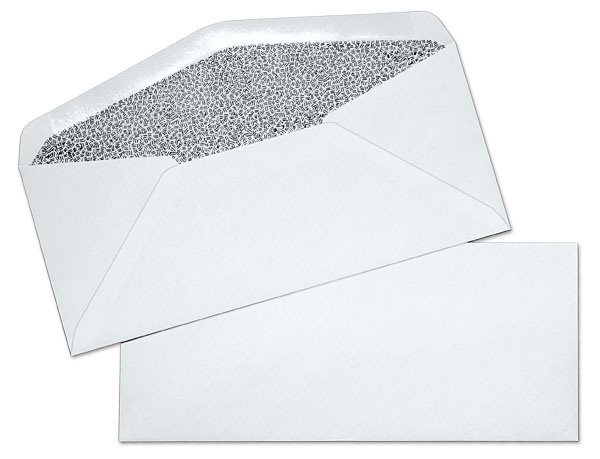
The most common types of envelopes is the commercial #10 envelope. These envelopes are typically 9 ½” by 4 ⅛” and are designed to be inserted into machines and mailboxes. Since this is the case, these envelopes are the most ideal and efficient choice for direct mail, invoices, checks, and statements.
Commercial envelopes can come in many different styles and types. They can have diagonal seams or side seams. They can come with windows or a security tint. They can also come in a wide range of seals, from lick-and-stick to a wax seal (though not often a spring-and-washer seal).
A-Style
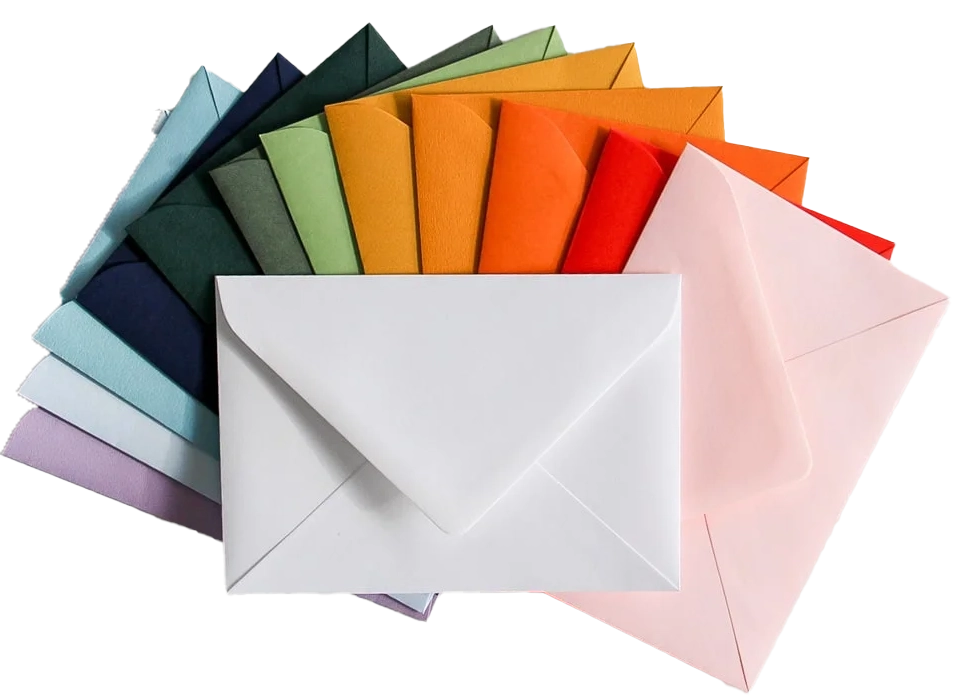
A-style envelopes (sometimes referred to as announcement or a-size) come in various different sizes, but often with a similar purpose. These types of envelopes are often used for announcements (business or personal), invitations, and smaller pieces. They often have a premium look and feel to them. Here are a few different sizes for a-style envelopes:
A-2: 4-3/8″ x 5-3/4″
A-6: 4-3/4″ x 6-1/2″
A-7: 5-1/4″ x 7-1/4″ (most popular)
A-8: 5-1/2″ x 8-1/8″
A-9: 5-3/4″ x 8-3/4″
A-10: 6″ x 9-½
Booklet Envelopes
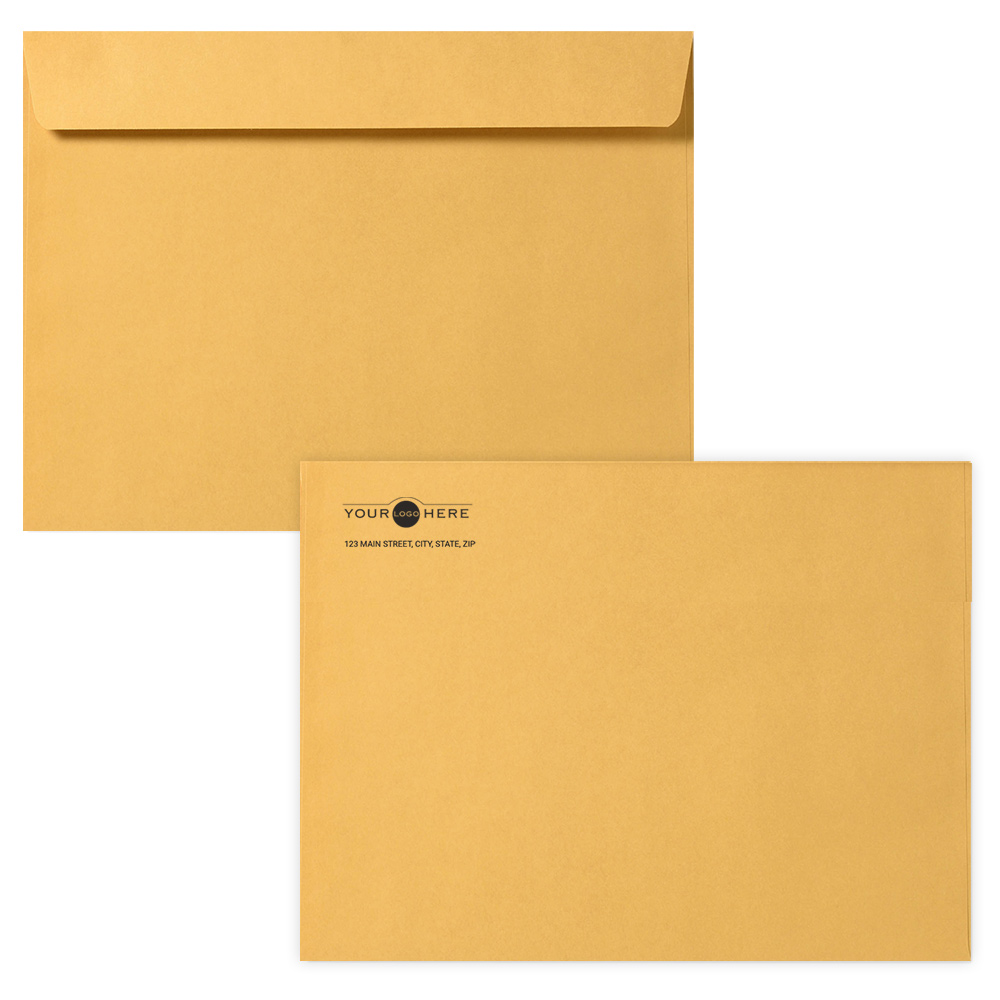
Booklet envelopes are bigger size envelopes, often used for items like annual reports, marketing brochures, sales materials, and proposals. A few of their more standard sizes are: 9” x 6”, 9” x 12”, and 10” x 13”. Though bigger than most envelopes, these envelopes typically come with the more traditional flap types.
Square Envelopes
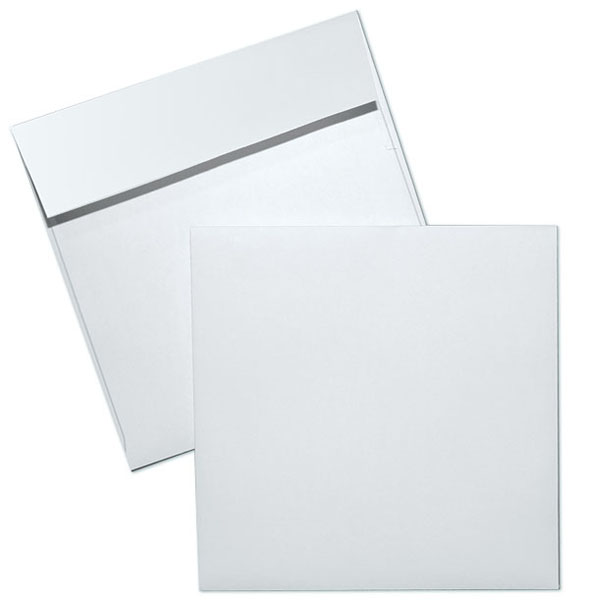
Square envelopes are, well, square. These envelopes are an equal length on both sides and can come in many sizes, flap types, seam types, and seal types. These envelopes are often used for announcements, advertising, specialty greeting cards and invitations.
Catalog (Open End)
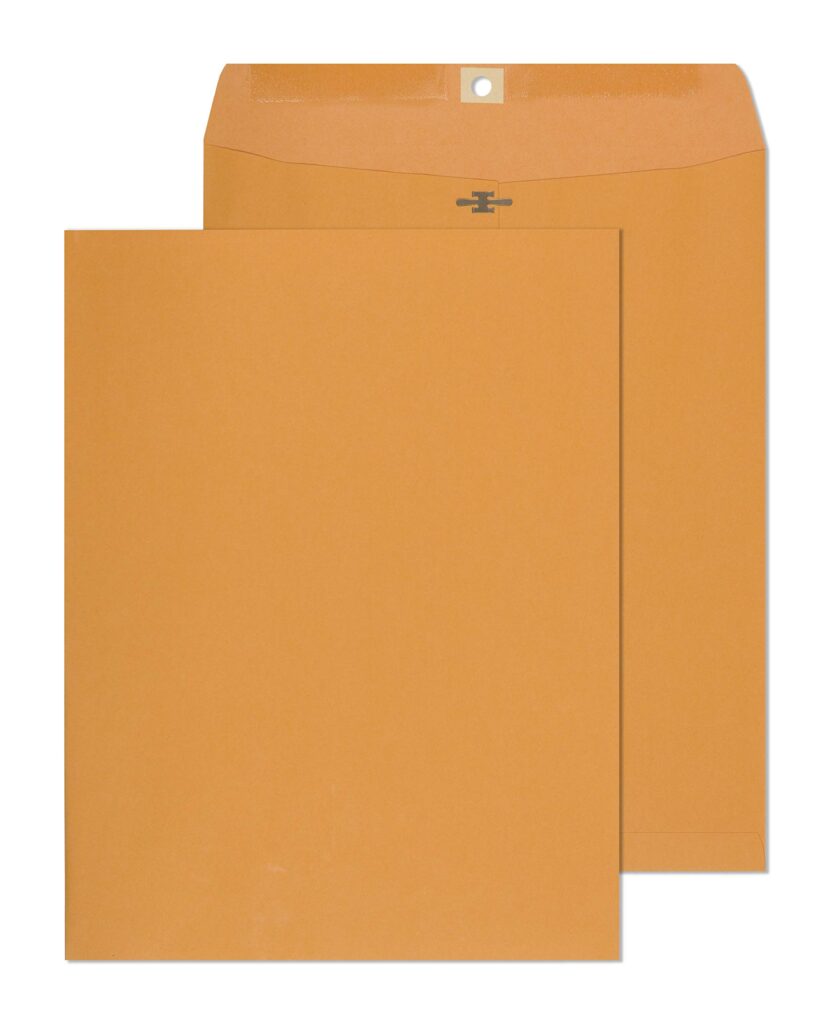
Catalog (also referred to as open end) envelopes are perfect for mailing or storing larger documents that need some protection. Though they are bigger sized, like booklet envelopes, catalog envelopes often have a center seal, vertical orientation, and an open end seal.